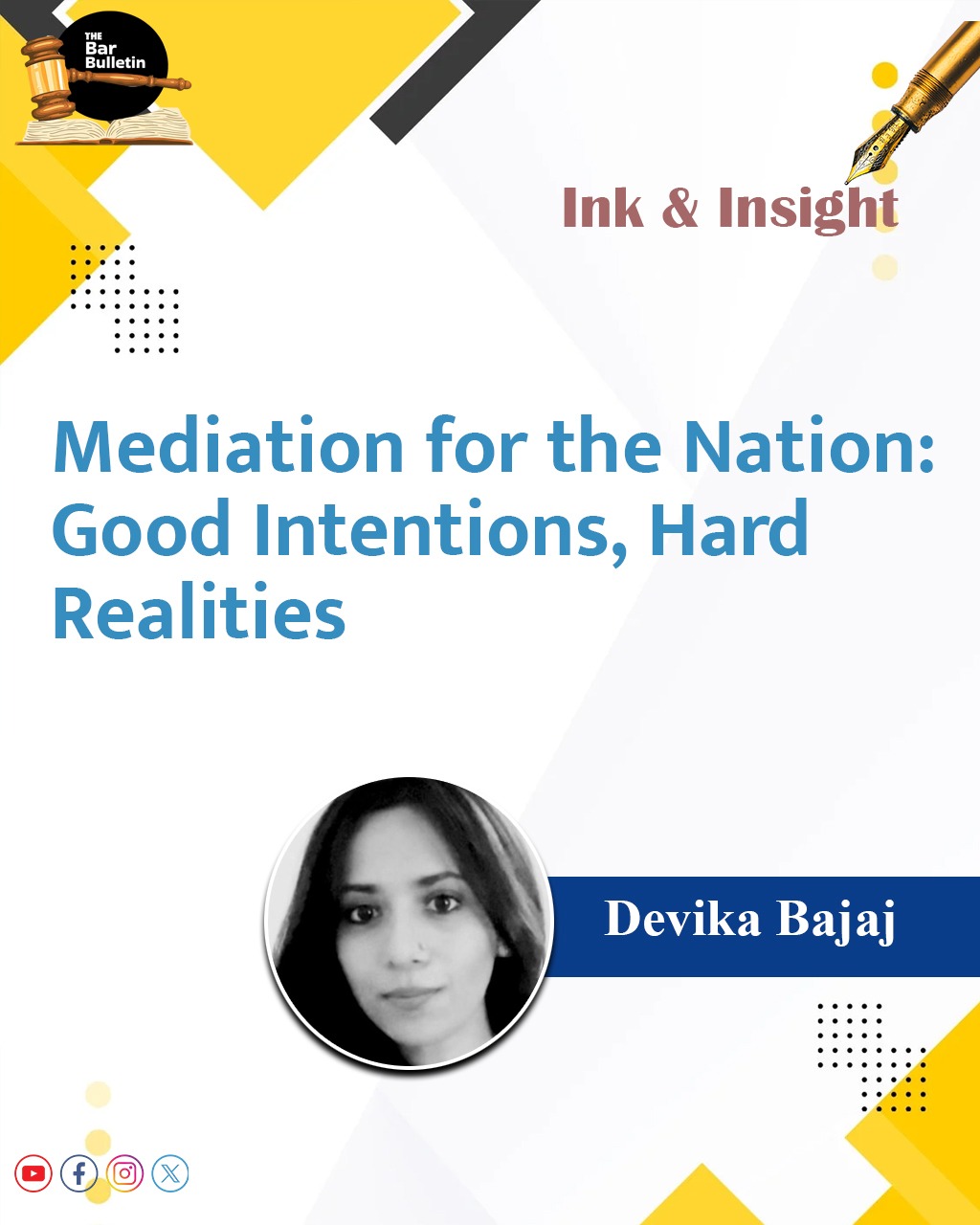The Supreme Court’s Mediation for the Nation campaign, launched this July under the aegis of NALSA and the Mediation and Conciliation Project Committee (MCPC), arrives with the weight of judicial hope and institutional resolve. This 90-day nationwide drive promises what many in the justice system have long yearned for: reduced backlogs, faster resolutions, and a shift from adversarial litigation to collaborative dialogue.
On paper, it is an ambitious and visionary initiative seeking to resolve suitable civil disputes through cost-effective, time-bound, and dignified mediation. But those who have spent time in the trenches of the district court system know that the distance between promise and practice is often vast.
We were taught that mediation is the future, a process rooted in empathy, dignity, and mutual understanding. A sacred space where people resolve their worst conflicts without confrontation. But that ideal often withers under the tube lights and tensions of a district court mediation room.
What you encounter instead is a setting that feels part-theatre, part-crisis centre. The mediator looks drained before the first word is spoken. Sessions quickly devolve into bitter inheritance disputes, emotionally charged family dramas, or property battles riddled with suspicion. The supposed “safe space” can feel unsafe for both the parties and the mediator. What is meant to be “neutral facilitation” often turns into silent witnessing of verbal aggression, power imbalance, or quiet coercion.
This isn’t the exception, it’s routine. Many family court mediations are not reconciliations but emotionally raw standoffs. Add to this mix the lack of trauma awareness, overstretched legal aid lawyers, and poor infrastructure, and the process begins to collapse under its own aspirations. We count forms and case closures but how often do we ask: Was this agreement truly consensual, or just a surrender born of exhaustion?
Contrast this with the Delhi High Court Mediation Centre, where mediation even when it fails feels meaningful. The difference is not just better facilities, but a philosophy of respect and preparation. There, process matters. Outcomes are measured not only in disposal rates but in whether parties left feeling heard.
Because mediation is not magic. It is legally complex, emotionally taxing, and structurally fragile if not properly supported. It cannot be romanticised as a peaceful alternative to litigation unless we are willing to invest in its psychological safety, institutional design, and cultural fluency.
The danger of large-scale mediation drives, particularly one endorsed by the Supreme Court, is that mediation may start to feel like a judicial expectation, rather than an option. The power imbalance shifts parties may feel pressure to settle not from mutual agreement but from fear of appearing non-compliant. What was meant as healing becomes hurried closure.
The burden falls most heavily on mediators. This is care work, not clerical case disposal. But without structural support co-mediation models, trauma-informed training, follow-up mechanisms, and safe, neutral environments—the emotional toll on mediators turns their work into quiet crisis management.
In rural and interior India, the challenges multiply: digital divides limit access, entrenched power hierarchies distort consent, and the absence of interpreters or cultural understanding leaves voices unheard.
Mediated settlements are binding, and difficult to undo. If this campaign produces agreements born out of fatigue or subtle coercion, the harm will be hard to reverse. This is not a pilot, it is a nationwide policy rollout. It must be treated with the care and scrutiny that finality demands.
To get it right, we must stop viewing mediation as a soft alternative and start treating it as a serious legal process requiring systemic intelligence. That includes:
Mandatory screening for suitability based on risk or imbalance
Co-mediation models combining legal and psychosocial expertise
Safe physical and emotional spaces
Post-mediation audits to assess the sustainability of settlements
Greater support for mediators, who are often left emotionally unsupported and institutionally isolated
If mediation is to be the gentler face of justice, it must first be just. Otherwise, we risk clearing dockets, but not healing wounds. We may collect compromises, but miss coercion. And we may end up mistaking silence for peace.
I believe in mediation. I believe in its promise and potential. And I want this campaign to succeed. But that success depends on acknowledging the gaps in training, infrastructure, philosophy, and power and committing to reform, not just rhetoric.
Mediation for the Nation is a promise worth keeping. Let’s ensure it lives up to its name not just in numbers, but in meaning.
*Advocate in New Delhi

